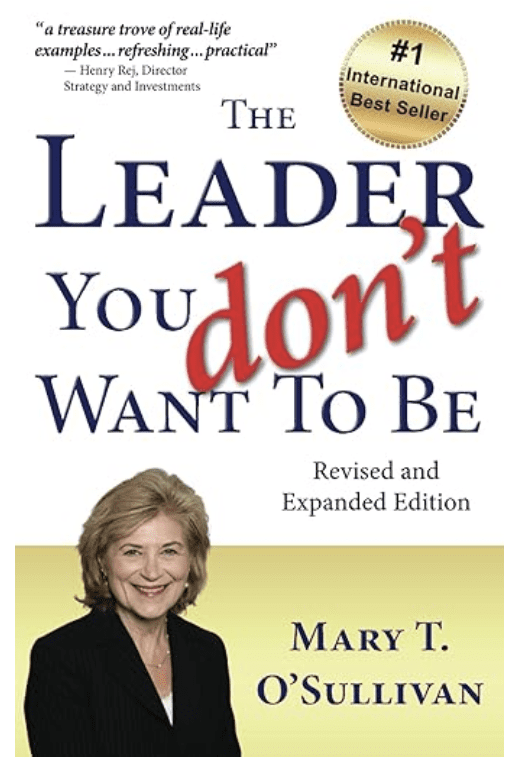Search Posts
Recent Posts
- Rhode Island Weather for April 1, 2025 – Jack Donnelly April 1, 2025
- Drowning in corruption in Bonnet Shores: Dr. Melissa Jenkins Mangili April 1, 2025
- ART! Pawtucket City Gallery Reception, Pawtucket April 1, 2025
- RI millennial rental trends: how investors can benefit from shifts in the market – Emilio DiSpirito April 1, 2025
- Brown Univ: Med school DEI dean moves to VP of Campus Life. Admits 2,418 to class ’29. April 1, 2025
Categories
Subscribe!
Thanks for subscribing! Please check your email for further instructions.

When women use their power – Mary T. O’Sullivan
by Mary T. O’Sullivan, MSOL, business leadership
“Women belong in all places where decisions are being made. It shouldn’t be that women are the exception.”— Ruth Bader Ginsburg
Women in the United States have been experiencing the glass ceiling since the mid 1800s. Awareness to bias against women began with Abigail Adams, the First Lady, wife of John Adams, who believed that women’s equality was dependent on access normally preserved for men in her era; the right to an education, the right to own property and, the right to vote. It wasn’t until 1919 that what was started by Abagail Adams and her contemporaries in Seneca Falls, NY, a full seven decades later that Congress passed the 19th Amendment granting women the right to vote.
Imagine waiting 71 years to fulfill the right to be a full citizen of the United States. And while many women enjoy freedoms their great-grandmothers only dreamed of; the reality is there’s still a long way to go. Women have made great progress over the last century, because they met the challenges that all women face. Finding herself the target of sexual harassment at work, Gretchen Carlson of Fox declared, “Be brave and be fearless, and for God’s sake, stand up for yourself.”
If we follow the timeline of the multiple waves of feminism from 1848 to 1980 it’s easy to see what the women’s rights movement has accomplished and also, how much work there is still to be done. The feminist movement from 1960-1980 was truly revolutionary. Inspired by the Civil Rights movement of the 1960s, women demanded gender equality, reproductive rights, better job opportunities and focused on the ugly truth of violence against women, and victim blaming. Women have been fighting female stereotypes for years; in the office, the home, the military, in healthcare, law, and many other professions. The stereotype gives the permission structure for inequity and harassment.
Think tank and academic research shows that skepticism about feminism dominates current male thinking. According to a study conducted by IPSOS, 58% of men agreed that as far as equality for women, “things have gone far enough…”. But many women would disagree with that notion. The Pew Research Center cites that 71% of women in the same survey believe that the country has not gone far enough in promoting women’s equal rights.
And in this election season, women have the power to make even more change. The Center for Women in Politics, a think tank associated with Rutgers University, found that “the number of female voters has exceeded the number of male voters in every presidential election since 1964”. The Brookings Institute found that “women accounted for 54.7% of the electorate and men accounted for 44%” in the 2020 presidential election, and those numbers can make a big difference.
So, despite the fact that women hold only 21% of C-Suite positions, considering historical voting statistics, women have the power to influence the future. Toxic masculinity and the “Bro” culture will not follow women into the voting booth. If we factor in the recent rulings that have compromised women’s standing, women now have more impetus to cast a ballot. The voting booth may be the only place where women can close the equality gender gap.
Will women’s votes stop sexual harassment, objectification, lack of respect, and break the glass ceiling? Maybe not entirely, but as proven by history, women know how to take on the challenge, as our foremothers did since the days of Abigail Adams.
Voting can help close the gender gap, in pay (women make 82 cents on the dollar that men make), in fair treatment on the job, in healthcare, and in power and decision making, among others. Remember, “the vote is the power, don’t let anyone take your power.”
“Rights are things which we get when we are strong enough to make our claim to them good. Today women are asserting their rights; tomorrow nobody will be foolhardy enough to question them.” – Helen Keller, 1920
___


Mary T. O’Sullivan, Master of Science, Organizational Leadership, International Coaching Federation Professional Certified Coach, Society of Human Resource Management, “Senior Certified Professional. Graduate Certificate in Executive and Professional Career Coaching, University of Texas at Dallas.
Member, Beta Gamma Sigma, the International Honor Society.
Advanced Studies in Education from Montclair University, SUNY Oswego and Syracuse University.
Mary is also a certified Six Sigma Specialist, Contract Specialist, IPT Leader and holds a Certificate in Essentials of Human Resource Management from SHRM.contributing writer, business leadership.
